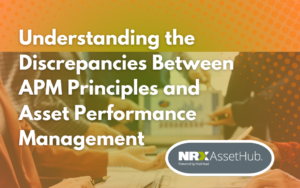In the realm of asset management, the landscape is often riddled with a multitude of challenges and opportunities. From equipment maintenance to process optimization, organizations constantly grapple with deciding where to allocate their limited resources for maximum impact. This is where the concept of Return on Investment (ROI) becomes invaluable. By effectively utilizing ROI analysis, businesses can identify which problems are worth fixing, thus optimizing their asset management strategies and ultimately enhancing their bottom line.
Understanding ROI in Asset Management:
ROI is a fundamental financial metric used to evaluate the efficiency and profitability of an investment relative to its cost. In asset management, ROI serves as a compass, guiding decision-makers towards investments that promise the highest returns. However, calculating ROI in the context of asset management requires a nuanced approach.
Assets encompass a broad spectrum, ranging from physical machinery to digital infrastructure. Each asset contributes differently to the organization’s operations and, consequently, carries its unique set of challenges and opportunities. Therefore, the ROI calculation must consider factors such as maintenance costs, downtime, productivity gains, and potential revenue generation associated with each asset.

Calculating ROIs:
With the problems delineated, the next step is to calculate the ROIs associated with potential solutions. This involves estimating the costs involved in implementing each solution and projecting the anticipated benefits over a specified time frame. The ROI formula, which divides the net benefit by the investment cost and expresses the result as a percentage, serves as the guiding principle.
For instance, upgrading outdated machinery may require a significant upfront investment but could lead to reduced maintenance costs, increased productivity, and enhanced product quality. By quantifying these benefits and comparing them to the investment cost, decision-makers can gauge the potential ROI of such an initiative.
Prioritizing Solutions:
Armed with ROI calculations, decision-makers can now prioritize solutions based on their potential returns. Solutions with higher ROIs typically offer greater value and should be given precedence in resource allocation. However, it’s essential to consider other factors such as implementation complexity, scalability, and strategic alignment with organizational goals.
Moreover, ROI analysis allows for scenario planning, enabling organizations to explore different investment options and their corresponding impacts on performance and profitability. By evaluating various scenarios, decision-makers can make informed choices that align with the organization’s risk tolerance and long-term objectives.
Implementing Solutions and Monitoring Performance:
Once solutions are prioritized, the focus shifts to implementation and performance monitoring. Effective project management ensures that initiatives are executed efficiently, within budget, and according to schedule. Additionally, establishing key performance indicators (KPIs) allows organizations to track the impact of implemented solutions over time.
Regular performance monitoring enables decision-makers to validate ROI projections and make adjustments as necessary. This iterative process fosters continuous improvement, driving ongoing optimization of asset management practices and maximizing returns on investment.

In the dynamic landscape of asset management, leveraging ROIs to prioritize solutions is paramount to success. By identifying problems, calculating ROIs, and prioritizing solutions based on potential returns, organizations can optimize resource allocation and drive sustainable value creation. Moreover, ongoing performance monitoring ensures that investments yield the expected benefits, paving the way for continuous improvement and competitive advantage in today’s rapidly evolving markets.
How Can We Help You?
HubHead’s benchmarking service can provide valuable support. Our experienced consultants have helped numerous companies achieve excellence through comprehensive benchmarking analysis that provides a roadmap to operational excellence. To learn more about how we can help you, contact us to book a meeting or download our brochure.
Understanding the Discrepancies Between APM Principles and Asset Performance Management
Overcoming the Hurdles: Simplifying the Process of Ordering Spare Parts Through Visuals
The Vital Importance of Embracing Innovation in Spare Parts Procurement
Share this article




